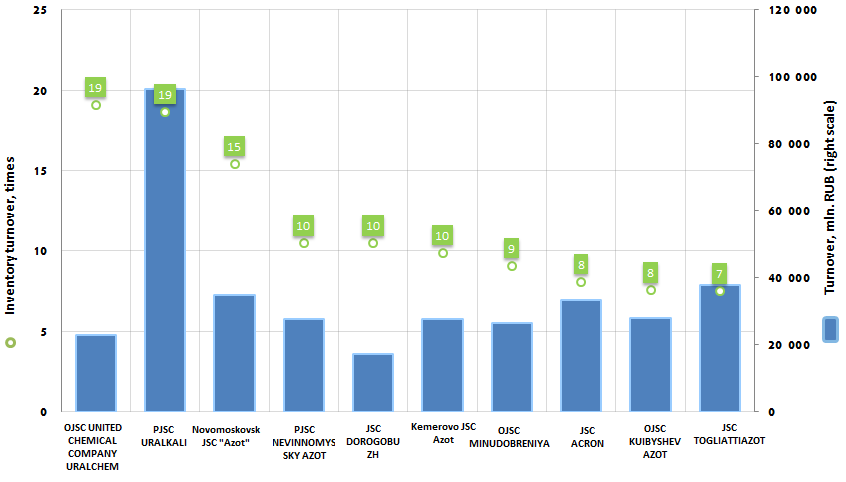Administrative Pressure on Small business in Russia will Decline
Credinform Information Agency in its previous publications several times touched on the small business theme.
Global business practice shows that the role of SMEs is of key importance for the economic stability and growth. The efficiency of small and medium business mostly depends on the governmental approach as confirmed in practice by successful economic development in many countries. While the government in Russia traditionally occupies a dominant position in all spheres of social relations, business in particular, the governmental policy in the area of regulation and support of entrepreneurship can dramatically influence the SMEs business development.
To grant domestic small business more freedom the Federal Law No. 294-FZ “On protection of legal entities and sole entrepreneurs by the state and municipal control implementation” came into effect December 26, 2008. In conjunction with the Federal Law No. 246-FZ as of July 13, 2015 amendments were passed to minimize the administrative pressure on the SMEs to facilitate their positive economic output in the today’s complex business environment.
There are the following improvements:
- Within 2016 – 2018 small business entities will not be inspected by the state control bodies. Exception for riskier business areas: manufacturer of hazardous products with a negative environmental impact, companies operating hydro-engineering structures, involved in activities on providing radiation security, state secrets protection, use of nuclear energy, apartment building administration, auditing;
- SMEs have the right to dispute their inclusion into the annual inspection plan;
- A risk-based approach: process, duration, frequency of control measures will depend on the potential hazard of negative consequences if a SME subject avoids to comply with the obligatory requirements/standards and a probability of the subject violating them;
- Federal laws or governmental acts will regulate terms attributing specific risk category or hazard rating to the corporations.
The Federal Law No. 246-FZ as of July 13, 2015 has come into effect on its publication date; sections related to the implementation of the risk-based approach will come into effect as of January 1, 2018.
According to statistics data, during the period 2012-2015 over 2 million inspections were planned, 20 % for 2015 showing a favorable trend in reduced inspections by the State. Further efforts will lead to more positive results, both in the SMEs business development and in the inhibition of the negative trends in Russian economy.
Subscribing for the Information and Analytical system Globas-i®, you may learn about inspections plan according to the summary plan of the RF Prosecutor General’s Office, including the information about monitoring authorities` control concerning specific contractor.
Inventory turnover of the largest Russian enterprises, engaged in manufacture of fertilizers
Information Agency Credinform has prepared the ranking of the companies, engaged in manufacture and supply of fertilizers.
The largest enterprises in terms of revenue were selected according to the data from the Statistical Register for the latest available period (for the year 2013). Then, the companies were ranged by decrease in rate of inventory turnover.
Inventory turnover (times) is a ratio of revenue and average stock value for a period. It shows the efficiency of inventories sales. The higher is the rate, the faster are the production cycle and sale of goods.
Low inventory turnover ratio is the poor indicator of financial and economic activity of the company, it reflects the surplus stocks and (or) poor sales, demand for products; the result is overstocking.
In contrast, the high inventory turnover ratio reflects the mobility of company's funds: the faster is the stock rotation, the faster is the money turnover, invested in stocks, and the return in the form of revenue from sales of finished products; the higher is the inventory turnover - the better for the company. Low stocks are forcing the company to balance on the brink of deficit, that is inevitably lead to losses of customers and unreasonably high expenses on rapid replenishment of stocks: the company has to bring enough goods.
Thus, the optimality of reserves is mandatory for company’s business activities, and inventory turnover is the indicator, which must be constantly updated.
For the most full and fair opinion about the company’s financial statement, not only the average revenue values should be taken into account, but also the whole set of financial indicators and ratios.
| № | Name | Region | Revenue, mln. RUB, 2013 | Inventory turnover, times | Solvency index GLOBAS-i ® |
|---|---|---|---|---|---|
| 1 | OJSC UNITED CHEMICAL COMPANY URALCHEM INN 7703647595 |
Moscow | 22 783,0 | 19 | 297 high |
| 2 | PJSC URALKALI INN 5911029807 |
Perm region | 96 308,9 | 19 | 191 the highest |
| 3 | Novomoskovsk JSC "Azot" INN 7116000066 |
Tula region | 34 966,0 | 15 | 176 the highest |
| 4 | PJSC NEVINNOMYSSKY AZOT INN 2631015563 |
Stavropol region | 27 770,2 | 10 | 205 high |
| 5 | JSC DOROGOBUZH INN 6704000505 |
Smolensk region | 17 359,6 | 10 | 148 the highest |
| 6 | Kemerovo JSC Azot INN 4205000908 |
Kemerovo region | 27 802,0 | 10 | 208 high |
| 7 | OJSC MINUDOBRENIYA INN 3627000397 |
Voronezh region | 26 585,4 | 9 | 197 the highest |
| 8 | JSC ACRON INN 5321029508 |
Novgorod region | 33 420,5 | 8 | 284 high |
| 9 | OJSC KUIBYSHEVAZOT INN 6320005915 |
Samara region | 28 045,1 | 8 | 180 the highest |
| 10 | JSC TOGLIATTIAZOT INN 6320004728 |
Samara region | 37 716,1 | 7 | 152 the highest |
